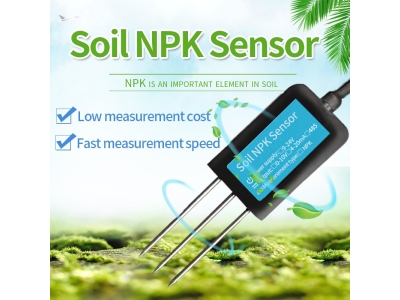
Where are soil sensors mainly used?
Soil sensors are innovative technological tools that have revolutionized the way we monitor and manage soil conditions in various applications.

Soil sensors are innovative technological tools that have revolutionized the way we monitor and manage soil conditions in various applications.
Soil sensors are innovative technological tools that have revolutionized the way we monitor and manage soil conditions in various applications. These sensors are designed to measure key parameters such as moisture content, temperature, pH levels, nutrient levels, and salinity in the soil. In this article, we will explore the diverse range of applications where soil sensors are mainly used and their significance in optimizing agricultural practices, environmental conservation, and research activities.

Agriculture:
One of the primary applications of soil sensors is in agriculture, where they play a crucial role in optimizing crop production and resource management. By providing real-time data on soil moisture levels, temperature, and nutrient content, these sensors help farmers make informed decisions regarding irrigation scheduling, fertilization practices, and crop health monitoring. Soil sensors enable precision agriculture techniques, such as variable rate irrigation and fertilization, leading to improved crop yields, water efficiency, and sustainability.
Environmental Monitoring:
Soil sensors are utilized in environmental monitoring programs to assess soil quality, contamination levels, and ecosystem health. These sensors help researchers and environmental agencies track changes in soil properties, detect pollutants, and evaluate the impact of human activities on soil ecosystems. By collecting data on soil parameters, such as heavy metal concentrations, organic matter content, and microbial activity, soil sensors contribute to the conservation and restoration of soil quality in natural habitats, urban areas, and agricultural landscapes.
Land Management:
Soil sensors are essential tools for land managers, urban planners, and developers involved in land-use planning and soil conservation initiatives. These sensors provide valuable information on soil characteristics, erosion risks, and land stability, helping stakeholders make informed decisions regarding land development, reclamation projects, and sustainable land management practices. Soil sensors support land rehabilitation efforts, erosion control measures, and soil conservation strategies to preserve soil resources and prevent land degradation.
Research and Education:
Soil sensors play a significant role in research activities and educational programs focused on soil science, agronomy, ecology, and environmental studies. Researchers use soil sensors to collect data for scientific studies, experimentation, and modeling exercises aimed at understanding soil dynamics, ecosystem processes, and the effects of climate change on soil health. In educational settings, soil sensors are valuable teaching tools that enable students to learn about soil properties, plant-soil interactions, and environmental monitoring techniques, fostering a deeper understanding of soil systems and sustainable land management practices.
Infrastructure Development:
Soil sensors are employed in infrastructure development projects, such as road construction, building foundations, and civil engineering works, to assess soil conditions and ensure structural integrity. These sensors provide critical information on soil compaction, bearing capacity, moisture content, and settlement rates, helping engineers and constructors design and construct stable and durable infrastructure that can withstand various soil-related challenges. Soil sensors aid in soil stabilization efforts, foundation design optimization, and risk mitigation strategies for infrastructure projects in diverse geotechnical environments.
In conclusion, soil sensors are versatile tools with a wide range of applications in agriculture, environmental monitoring, land management, research, education, and infrastructure development. By providing valuable data on soil properties, moisture levels, nutrient content, and environmental conditions, soil sensors support sustainable practices, enhance productivity, and promote soil health and resilience. It is essential to continue advancing soil sensor technologies, integrating data-driven solutions, and promoting collaborations across sectors to address soil-related challenges, protect natural resources, and ensure the long-term sustainability of our soils and ecosystems.